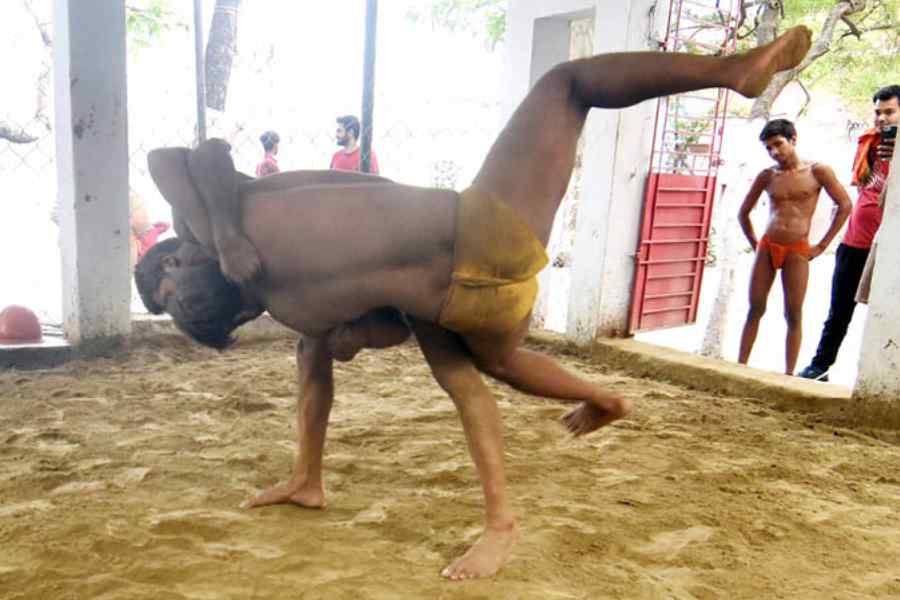The significance of akharas in popular culture has transformed over the years. This article intends to trace the progression of the concept of akharas from the twentieth century and their connection with gendered perceptions. From the propagation of physical culture and wrestling’s popularity to the assertion of martial traditions by caste groups, to the embodiment of Hindu militancy during colonial rule and the cultivation of a nationalist way of life, to muscular caste politics and the increased involvement of women wrestlers, particularly in Haryana, the meaning and the relevance of akharas have varied considerably.
The wrestlers’ physique can be understood as a politically-constructed site that produces new subjectivities. For example, the notion of a ‘martial body’ held a distinct political significance in colonial India. Joseph Alter’s insightful work on wrestling in North India pertains to the cultivation of a distinct form of masculinity that emphasises abstinence and discipline rooted in the Hindu ethos of living. Alter observed that the discourse around wrestlers echoed the colonial criticism of the body of the baboo — the stereotypical portrayal of colonial subjects as passive and submissive by the British — leading to a renewed emphasis on physical fitness. This emphasis embraced the representation of a purer form of masculine body within the ideological context of nationalism and its interaction with a uniquely mediated form of modernity.
Dangal, then, is not only seen as lucrative for the rewards (including money) it offers, which are vital for a wrestler’s initial sustenance, but it is also viewed as a ‘naam ka dangal’ (a term used by Alter) where reputation is at stake for this distinct representation of masculinity. The assertion of martial traditions by different caste groups further fuelled the spread of akharas as centres for promoting physical culture.
Akharas also served as bases for ‘lower’ caste groups among the urban poor to organise against other groups, particularly in the context of conflicts over limited land or job opportunities. They also resisted police actions under the pretext of urban improvement policies and town- planning in the twentieth century. The increased self-assertion by these groups, equating physical strength with bravery and associating physical labour with pride, brought the narrative of martial traditions to the forefront of subaltern popular politics. Substantial research has also been carried out on akharas evolving into centres of local political activities, particularly in shaping robust political styles. Consequently, these spaces serve as venues for political discussions and for local residents to build their image as men of strength.
The recent involvement of women in sports, notably wrestling, has triggered a transformation in gender dynamics within the field. Historically, wrestling, linked to a culture promoting celibacy and brotherhood, marginalised women, viewing them solely in terms of sensuality and, thus, as potential threats to young wrestlers’ self-control. This view, as observed by Alter, prevented women from entering akharas. However, women now increasingly perceive wrestling and sports as pathways to freedom, mobility (both social and spatial), pride, recognition, and incentives. Rupal Oza’s research indicates that sports has emerged as a significant avenue for gaining visibility and securing employment, especially in the context of Haryana’s neoliberal economy. This phenomenon accommodates the contradictions of Haryana’s skewed sex ratio while simultaneously producing accomplished and celebrated
female athletes. The current crisis in the state, marked by a declining agricultural sector, plummeting groundwater levels, high unemployment rates and the attraction of government jobs, provides the backdrop to the burgeoning culture of wrestling among women. Wrestling, along with sports in general, thus becomes a realm where gender norms are transcended.
Prachy Hooda is a doctoral candidate at Jawaharlal Nehru University. Her research focuses on gender, sports and society in Haryana










